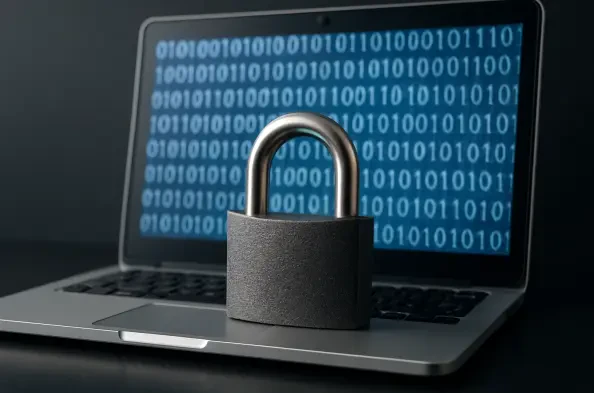Introduction
Imagine a scenario where the personal data and images of young children at a nursery are stolen and published online, accompanied by threatening calls to parents demanding ransom, a chilling reality that unfolded in a high-profile data breach at a UK-based nursery. This incident exposed the alarming vulnerability of educational institutions to cyber threats and highlighted the urgent need to address cybersecurity in schools and nurseries, where sensitive information is often inadequately protected. The purpose of this FAQ is to explore how education can combat these risks by answering critical questions about vulnerabilities, solutions, and stakeholder roles. Readers can expect actionable insights and practical guidance on safeguarding data in educational settings, drawing from expert perspectives on this pressing issue.
The scope of this discussion encompasses the unique challenges faced by schools and nurseries, often constrained by limited resources and expertise. It delves into the systemic issues revealed by such breaches and offers a clear path forward through targeted strategies. By addressing key concerns, this content aims to equip educational stakeholders with the knowledge needed to prioritize and enhance cybersecurity measures.
Key Questions or Key Topics Section
What Makes Educational Institutions Vulnerable to Cybersecurity Threats?
Educational institutions, from nurseries to universities, hold vast amounts of sensitive data, including personal details of students and staff, making them prime targets for cybercriminals. A significant breach at a nursery demonstrated how even the youngest individuals can become victims when security measures fail. The primary issue lies in the often outdated or insufficient protective systems that struggle to keep pace with sophisticated cyber tactics, leaving critical information exposed to theft or misuse.
A major contributing factor is the lack of robust protocols like multi-factor authentication (MFA) or data encryption, which could prevent unauthorized access. Many schools and nurseries operate with minimal cybersecurity infrastructure, sometimes due to a perception that such threats are unlikely or secondary to other priorities. This vulnerability is compounded by the potential for compromised credentials, often obtained through malware on personal devices, to grant hackers easy entry into systems.
Expert analysis suggests that the absence of on-site cybersecurity specialists further exacerbates the problem, as reliance on external IT providers may not guarantee a focus on security. Without dedicated personnel to monitor and respond to risks, educational organizations remain at a disadvantage. Addressing this gap is essential to building resilience against the growing audacity of cyber attackers targeting these institutions.
Why Do Budget Constraints Hinder Cybersecurity in Schools?
Financial limitations pose a formidable barrier to implementing effective cybersecurity measures in the education sector. State-funded schools and nurseries, in particular, often view advanced security tools as an unaffordable expense when budgets are already stretched thin for basic operational needs. This constraint prevents the adoption of technologies that could significantly reduce the risk of data breaches.
Beyond the cost of software or hardware, there is also the challenge of allocating funds for ongoing training and maintenance, which are critical to sustaining a secure environment. Without consistent investment, even initial efforts to bolster defenses can become obsolete as cyber threats evolve. The disparity between well-funded private institutions and under-resourced public ones further widens the gap in cybersecurity readiness.
Insights from industry professionals emphasize that while comprehensive solutions may be ideal, the reality of limited budgets necessitates a focus on cost-effective steps. Prioritizing small, impactful changes can offer substantial protection without requiring significant expenditure. This approach acknowledges the fiscal challenges while still pushing for meaningful progress in securing educational data.
How Can Schools Implement Practical Cybersecurity Solutions?
Despite resource constraints, schools can adopt practical, low-cost measures to enhance their cybersecurity posture. One of the most effective starting points is enabling multi-factor authentication across all systems, adding an extra layer of defense against unauthorized access. This simple step can thwart many attempts by hackers to exploit stolen credentials.
Another actionable strategy involves regularly reviewing user access privileges to ensure that only necessary personnel have entry to sensitive data. Assigning specific individuals to oversee security tools and awareness initiatives, even if they lack expert training, can also create accountability and drive consistent efforts. These measures focus on leveraging existing resources to address the most pressing vulnerabilities.
Sustained awareness training for staff and stakeholders is equally vital, moving beyond one-off sessions to build a culture of vigilance. Educating employees about recognizing phishing attempts or securing personal devices can prevent many breaches at the outset. Together, these pragmatic solutions offer a feasible way for educational institutions to strengthen their defenses without overwhelming their capacity.
What Role Should Government and Local Authorities Play in Supporting Cybersecurity?
Government and local authorities have a crucial responsibility to support cybersecurity in education through policy and funding. While guidelines from national bodies provide a starting point, voluntary recommendations often fall short of ensuring widespread adoption, especially in underfunded schools. Mandatory standards, backed by dedicated financial resources, are necessary to enforce consistent protection across diverse institutions.
Such mandates could include requirements for basic security measures like MFA or regular audits, ensuring a baseline of safety for all educational organizations. Funding allocations could also subsidize the cost of essential tools or training programs, alleviating the burden on individual schools. This structured support would help level the playing field, particularly for state-funded entities struggling to keep up.
Expert opinions underscore the importance of treating cybersecurity in education as a critical infrastructure concern, akin to physical safety regulations. Collaboration between governmental bodies and educational leaders can foster tailored solutions that address local needs while adhering to national priorities. This partnership is key to driving systemic change and preventing future breaches from exploiting known weaknesses.
How Can Awareness and Culture Change Mitigate Cyber Risks in Education?
Building a culture of cybersecurity awareness within educational institutions is a powerful tool for mitigating risks. Staff, students, and even parents need to understand the importance of safeguarding data and recognizing potential threats like suspicious emails or links. Regular, engaging training sessions can transform awareness from a checkbox exercise into a shared responsibility.
Fostering this cultural shift requires leadership to champion security as a core value, integrating it into daily operations rather than treating it as an afterthought. Designating security champions among staff to lead by example can inspire broader participation and accountability. This approach ensures that cybersecurity becomes embedded in the institution’s ethos, reducing human error as a point of entry for attackers.
Evidence from successful programs in other sectors shows that consistent reinforcement of best practices significantly lowers incident rates. Applying similar strategies in education, such as gamified learning or real-world simulations, can make the topic relatable and memorable. Over time, a proactive mindset among all stakeholders can serve as a first line of defense against evolving cyber threats.
Summary or Recap
This FAQ addresses the critical cybersecurity challenges facing educational institutions, spotlighted by a severe data breach at a nursery. Key vulnerabilities stem from inadequate protective measures, budget constraints, and a lack of expertise, leaving schools and nurseries exposed to sophisticated cyber threats. Practical solutions, such as enabling multi-factor authentication and fostering awareness, offer immediate ways to bolster defenses despite limited resources.
The role of government in enforcing mandatory standards and providing funding emerges as a pivotal factor in achieving systemic improvement. Additionally, cultivating a culture of vigilance among staff and stakeholders stands out as a sustainable method to mitigate risks. These insights underscore the urgency of prioritizing cybersecurity in education to protect sensitive data.
For those seeking deeper exploration, resources from national cybersecurity centers or educational departments can provide further guidance on specific tools and policies. Engaging with local cybersecurity experts or attending relevant workshops can also offer tailored advice. These avenues ensure continued learning and adaptation to the ever-changing landscape of digital threats.
Conclusion or Final Thoughts
Looking back, the discussions around cybersecurity in education revealed a landscape marked by urgent challenges and actionable opportunities. Reflecting on past incidents, it became evident that small, strategic steps had the power to create significant barriers against cyber threats. The path forward demanded a collective commitment to prioritize data protection as a fundamental aspect of educational responsibility.
Educational leaders were encouraged to initiate dialogues with government bodies to advocate for enhanced support and mandatory frameworks that could safeguard institutions more effectively. Exploring partnerships with cybersecurity professionals to implement low-cost, high-impact measures was also a vital next step. These actions promised to build a more resilient future for schools and nurseries in the face of digital dangers.
A final reflection urged every stakeholder in the education sector to assess their own environment for potential weaknesses and take ownership of even the smallest improvements. Considering how these insights applied to specific contexts could spark meaningful change. The journey to secure educational data was ongoing, but with focused effort, a safer digital space for students and staff was within reach.






